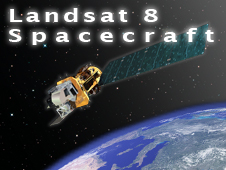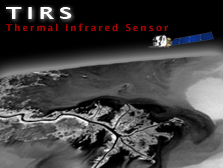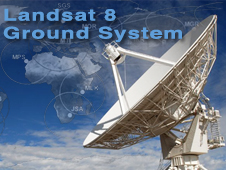The Landsat 8 spacecraft was built by Orbital Sciences Corporation. The spacecraft contract was awarded in April 2008. The spacecraft accommodates two government-furnished instruments forming the Landsat 8 Observatory, OLI and TIRS. The spacecraft has a design life of 5 years, but carries sufficient fuel for 10 years of operations.
+ Download 1/48 scale Landsat 8 model & assembly instructions (PDF, 5 Mb)
The Operational Land Imager (OLI) was built by the Ball Aerospace and Technologies Corporation. The Ball contract was awarded in July 2007. OLI improves on past Landsat sensors using a technical approach demonstrated by a sensor flown on NASA’s experimental EO-1 satellite. OLI is a push-broom sensor with a four-mirror telescope and 12-bit quantization. OLI collects data for visible, near infrared, and short wave infrared spectral bands as well as a panchromatic band. It has a five-year design life.
The Thermal Infrared Sensor (TIRS) was added to the Landsat 8 payload to continue thermal imaging and to support emerging applications such as evapotranspiration rate measurements for water management. TIRS was built by NASA Goddard Space Flight Center, and it has a three-year design life. The 100 m TIRS data is registered to the OLI data to create radiometrically, geometrically, and terrain-corrected 12-bit Landsat 8 data products.
Launch services were provided by the NASA Kennedy Space Center (KSC). The launch vehicle was an Atlas-V rocket and was managed by KSC and procured from United Launch Alliance.
The Landsat 8 Ground System includes all of the ground-based assets needed to operate the Landsat 8 observatory. The primary components of the Ground System are the Mission Operations Element, Collection Activity Planning Element, Ground Network Element, and the Data Processing and Archive System.





